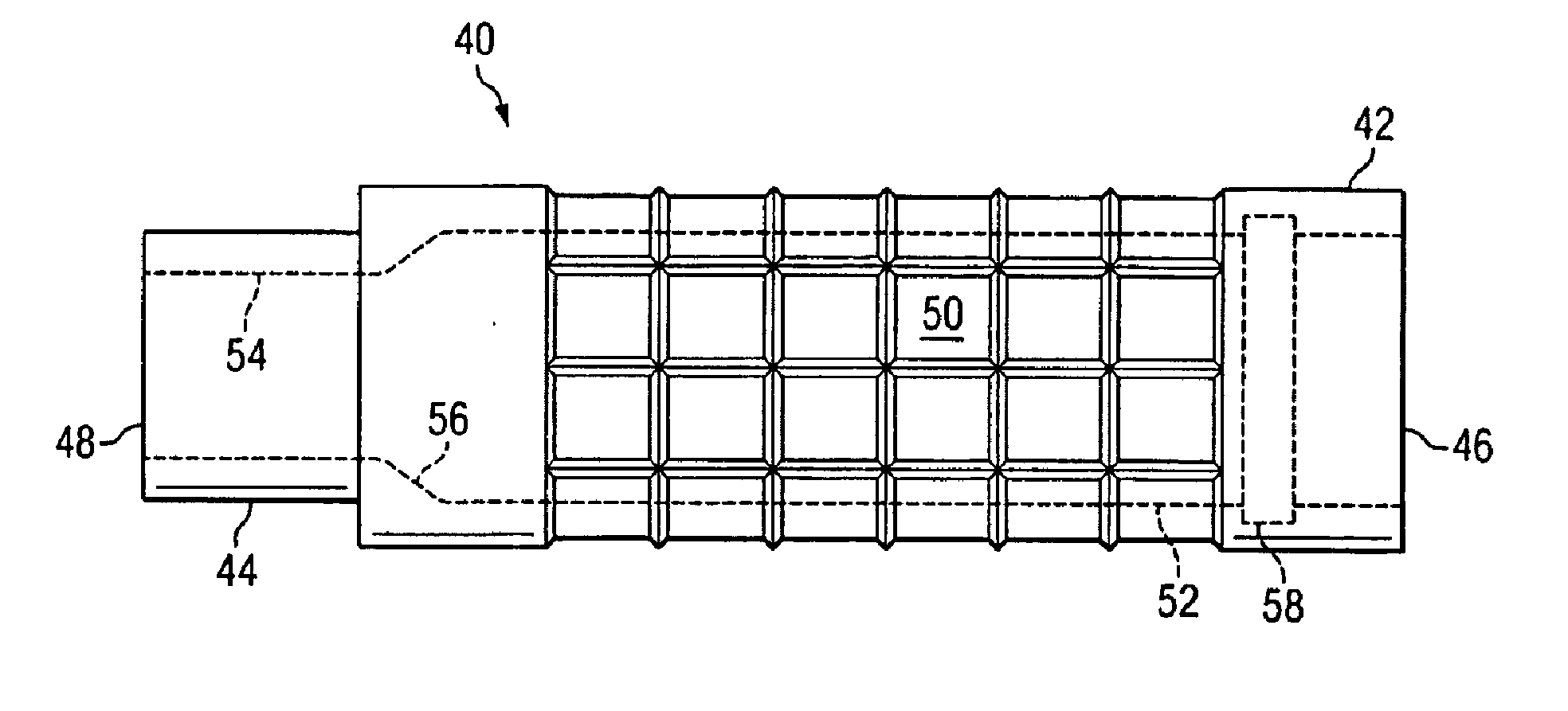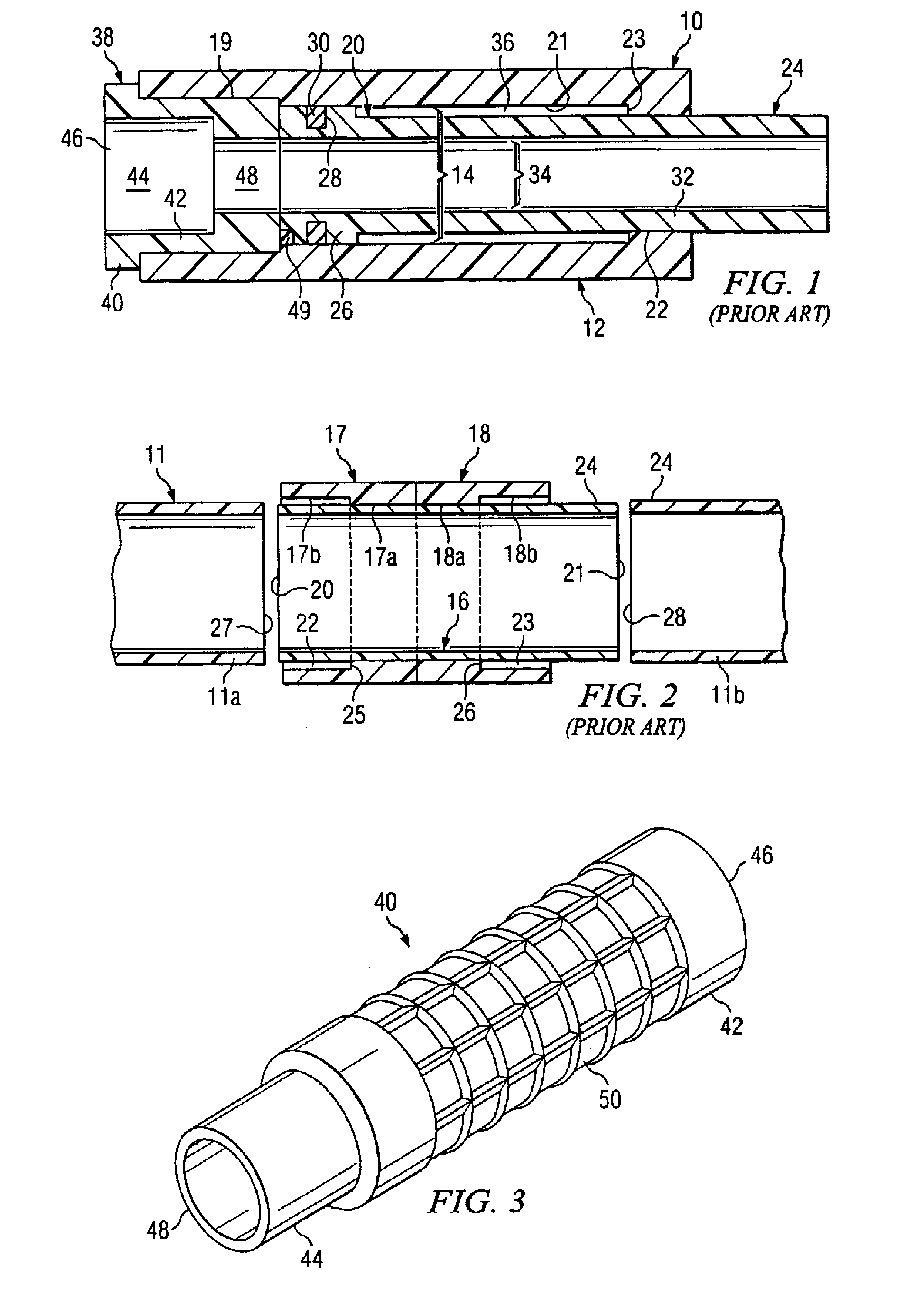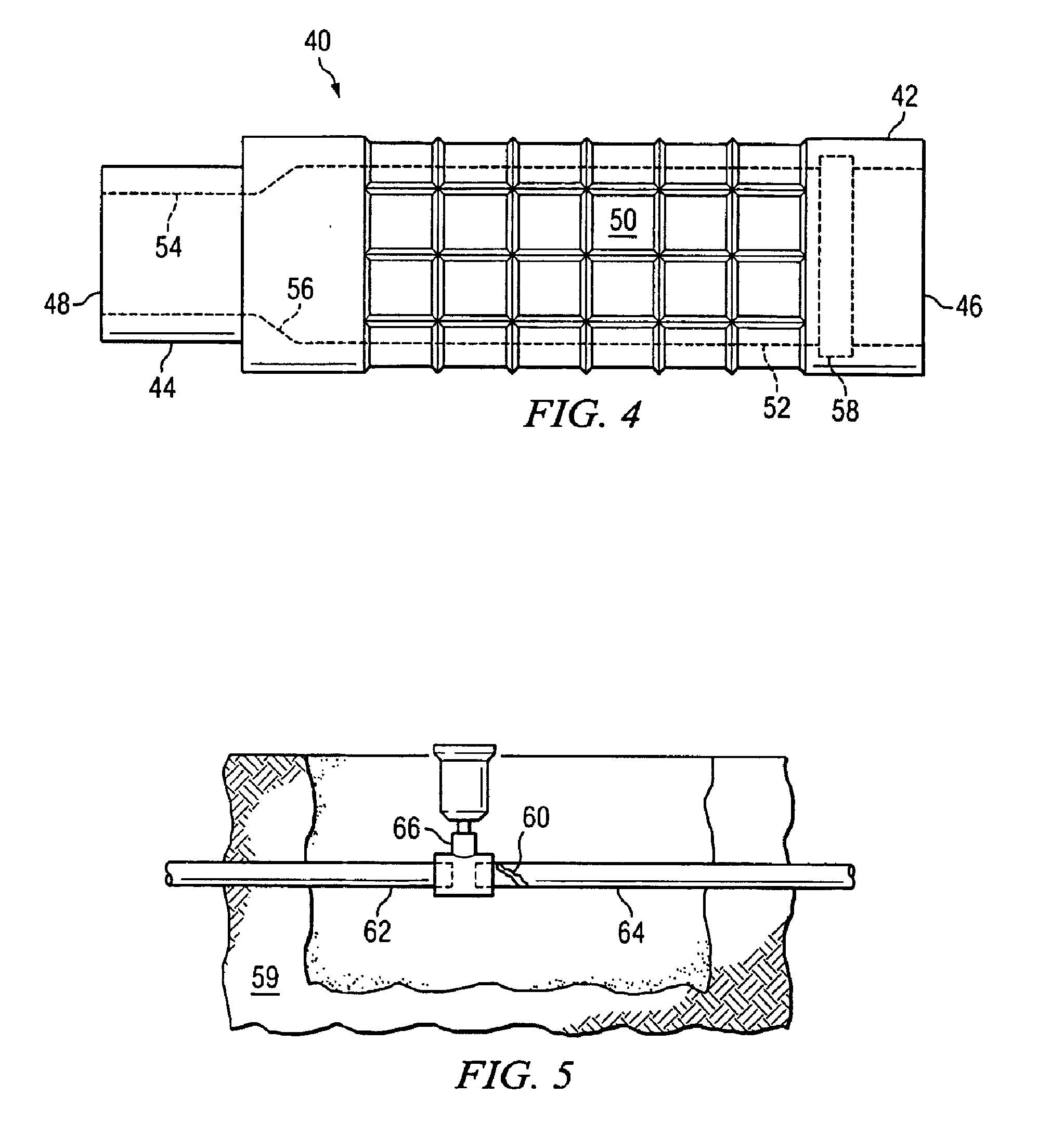Conduit repair
a conduit and fitting technology, applied in the direction of sleeves/socket joints, pipe joints, pipe elements, etc., can solve the problems of requiring replacement, allowing unintended flow of water from the pipe, and most often broken pipes, etc., to achieve simple and easy repair, convenient in-line attachment, and quick and easy installation of devices
- Summary
- Abstract
- Description
- Claims
- Application Information
AI Technical Summary
Benefits of technology
Problems solved by technology
Method used
Image
Examples
Embodiment Construction
[0036]FIG. 1 and FIG. 2 are prior art devices for repairing damaged pipe sections in irrigation systems and other underground installed pipe systems. FIG. 1 is a cross sectional view of a pipe repair coupling (shown in FIG. 2 thereof) from the patent of Zimmerman U.S. Pat. No. 4,687,232 employing a telescopically extendable connection to facilitate repair.
[0037] In FIG. 1 Zimmerman teaches slip joint style pipe repair coupling 10 having a joint housing 12 containing a Piston pipe 24 extendable from one end thereof and a reducer bushing 38 mounted on its opposite end. Joint housing 12 includes an axial bore 14 containing piston pipe 24 so that is may move in a telescopic motion therein. Piston pipe 24 has an enlarged piston section 26 at its innermost end with an o-ring 30 providing sealing contact between piston portion 26 and axial bore 14. Joint housing 12 has a bushing socket 19 at one end to contain reducer bushing 38. Reducer bushing 38 has a two stage axial bore 44 to afford ...
PUM
 Login to View More
Login to View More Abstract
Description
Claims
Application Information
 Login to View More
Login to View More - R&D
- Intellectual Property
- Life Sciences
- Materials
- Tech Scout
- Unparalleled Data Quality
- Higher Quality Content
- 60% Fewer Hallucinations
Browse by: Latest US Patents, China's latest patents, Technical Efficacy Thesaurus, Application Domain, Technology Topic, Popular Technical Reports.
© 2025 PatSnap. All rights reserved.Legal|Privacy policy|Modern Slavery Act Transparency Statement|Sitemap|About US| Contact US: help@patsnap.com



